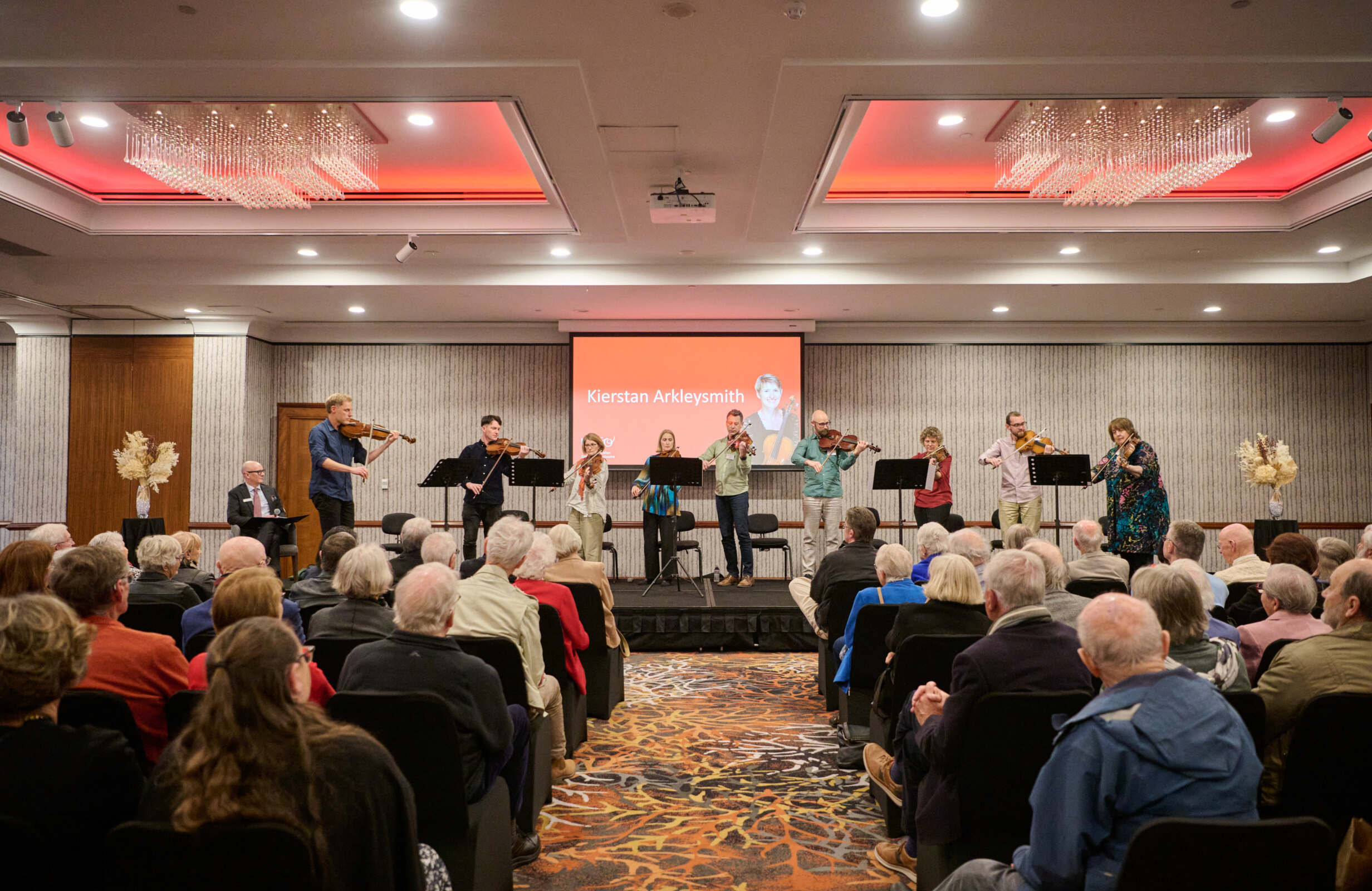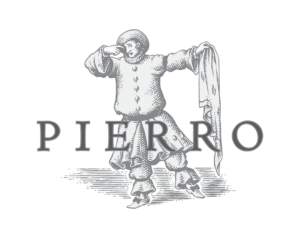In 1735, Johann Sebastian Bach compiled a genealogy of the (male) musical Bachs, assigning them numbers as the Americans do their presidents. No.1 was Veit Bach (1555–1619) – a baker-miller who, while not a professional musician, took pleasure in playing the cittern, ‘and this was, as it were, the beginning of a musical inclination in his descendants’.
Heinrich Bach, a Veit grandson and Sebastian’s great uncle, was 6. He represents the Arnstadt branch of the family and was town organist there. Evidently details were hazy for Johann Ludwig Bach of the Meiningen branch, but he is mentioned under the entry for 3, Caspar Bach. More significantly, Sebastian copied and preserved a number of Ludwig’s church cantatas, performing them in tandem with his own. Sebastian listed his own résumé at 24 – he’d held church and court posts in Weimar, Arnstadt and Cöthen, and was now music director at the Leipzig Thomaskirche – and at number 46, his second son, Carl Philipp Emanuel, then a university student in Frankfurt.
Heinrich Bach was a significant figure in the family. Emanuel would add to the genealogy that he was ‘a good composer and of a lively disposition’, and we know from his funeral sermon that he was prolific as well as accomplished. Unfortunately, little of his music survives, and of his instrumental works we have only two sonatas for strings, including the splendid Sonata in F, that were preserved in a compendium of instrumental pieces presented to Duke August the younger of Wolfenbüttel and his wife in 1662.
We don’t know when Heinrich Bach composed his sonatas, but a presentation volume like this would have assembled ‘proven’ works already in circulation, so they may date from the 1640s. Even then the style seems old-fashioned – suggestive of Giovanni Gabrieli at the beginning of the 17th century. Listen for the simple textures and the dance-like triple metres of the outer sections, and to the playful contrasts in the central section: Adagio (slow) and Presto (fast); forte (loud) with piano (soft) echoes at the ends of phrases. Those echoes point to another distinctive feature: Heinrich’s Sonata could almost be vocal music, with the string instruments forming a choir.
But this is not music for singing; a sonata is music for playing, a literal ‘sound piece’. The sonata is the equivalent of Veit Bach: No.1 in a ‘family tree’ of instrumental genres. In the 17th century a sonata like Heinrich’s might have been recognised as a ‘concerto’, creating the effect of alternating groups, or it could have been labelled a ‘symphony’, its five-part string texture suggesting orchestral sound. The classical sonata will emerge by the end of the 18th century, but meanwhile the sonata will exist in a fluid relationship with its instrumental cousins: the sinfonia or symphony, the concerto, and the ‘ouverture’ or suite, as well as hybrids of these.
Two very different concertos – both by Sebastian Bach – feature in this program. First is a speculative reconstruction of a lost Concerto for oboe and violin (BWV 1060r). The music has survived in authoritative form as a concerto for two harpsichords (BWV 1060), an adaptation Bach made in Leipzig. In the 1920s, the German musicologist Max Seiffert made a case for it having been conceived for oboe and violin, and for the past century scholars, music lovers and grateful oboists have embraced this version.
Supporting Seiffert’s theory is the distinctive musical material for the soloists. Unlike Bach’s Double Violin Concerto in D minor (BWV 1043), each part has its own exclusive motifs. The violin is given idiomatic gestures such as arpeggios, leaping intervals, wideranging melodic lines and bariolage (the bow rapidly alternating between adjacent strings). Meanwhile, the oboe plays smoothly contoured melodies. That said, in the Adagio, the solo parts weave together in an exquisitely matched conversation.
BWV 1060r displays the characteristics of the fashionable Italian concertos (think Vivaldi) that Bach had transcribed in Weimar. These include the use in the outer movements of ritornello form, in which recurring refrains from the full ensemble provide context for solo episodes. Above all, the music is full of opportunities for virtuoso display – a defining, if not the defining, feature of nearly every concerto since.
But there was another type of baroque concerto, the concerto grosso, and the ‘Six Concertos with Several Instruments’ that Sebastian sent to the Margrave of Brandenburg in 1721, represent this genre at its peak, although none of the six is truly typical. Today we refer to them as the ‘Brandenburg Concertos’, but with that nickname we’ve lost the nuance of Bach’s own title, which conveniently (perhaps deliberately) blurs the distinction between solo concerto and concerto grosso.
The Third Brandenburg Concerto has no soloists, or rather, everyone’s a soloist. The strings are organised in three groups of three, making it the most democratic and most ‘symphonic’ of the set – almost modern. At the same time, the ensemble evokes Renaissance consort music, with choirs of like instruments and an emphasis on dialogue between groups. Sebastian’s musical language is up to date, but in some ways this concerto is as old-fashioned as Heinrich Bach’s Sonata.
In the first half of the program – sonata, concerto, symphony – each work adopts the now familiar structure of three movements, fast–slow–fast. But with Ludwig Bach we encounter another way of organising music – the ouverture or orchestral suite – and a very particular function: the music now dances.
Ludwig Bach’s Ouverture–Suite, composed in 1715, represented the height of fashion and cosmopolitan sophistication. Its composer never left Meiningen, but music such as this brought together the clarity and elegance of French dance music, the singing brilliance of the Italian concerto, and a native harmonic richness, all subsumed in a perfect ‘mixed style’ that German composers happily claimed for their own.
The substantial first movement is a French overture: majestic music (Lentement) framing a faster imitative section (Vite). The tradition of Lully and the French theatre is evident, yet its straightforward vigour suggests another German-born composer, Handel. And Ludwig has abandoned Lully’s five-part textures for the more modern four-part ensemble of two violins, viola and basso continuo, doubling the violin lines with a pair of oboes for brilliant colour.
The ouverture was a functional genre, and it was not unusual for performers to make a selection from the dances and other movements in a set. For this concert we’ve chosen the lively and imminently danceable Bourrée and one of Ludwig’s two airs in the Italian style.
At the conclusion of the program is another ouverture, Sebastian Bach’s Orchestral Suite No.2, BWV 1067. Like Ludwig’s, it begins with a grand French overture. Sebastian’s dances, however, are more stylised – for listening rather than dancing – and include novelties such as the slow Polonaise and, to finish, the brilliant, teasing Badinerie. At this point it’s clear, the work is effectively a flute concerto.
In other words, we have a baroque hybrid, occupying the space between concerto and suite in what 18th-century German musicians might have labelled a concert en ouverture. One theorist, Johann Adolph Scheibe, stressed that this type of work must maintain a proper balance, staying true to the spirit of an orchestral suite and remaining distinct from a concerto proper. This, he wrote, could be achieved by not lapsing from a French style into an Italian one, and by avoiding giving the ‘soloist’ music that’s too assertive or too virtuosic. For listeners today, the resulting tension (and occasional friction) between musical style and the handling of the instruments is part of the appeal.
Tension is also central to the appeal of the newest and most radical music on the program, the second of Emanuel Bach’s ‘Hamburger’ symphonies. When it was composed in 1773, Sebastian had been dead 23 years, Mozart was only beginning to produce mature work, and between these pillars of the Baroque and Classical styles, Emanuel Bach was writing music of extraordinary sensibility and imagination. Of all the glorious legacies of the Bach family, his is the most distinctive and original – completely without peer.
We have Baron Gottfried van Swieten to thank for the six Hamburger symphonies (Wq.182). Best known for his patronage of Haydn, Mozart and Beethoven, this diplomat was a connoisseur who championed innovative voices as well as ‘old masters’ (Sebastian Bach, Handel). And in commissioning the symphonies, he invited Emanuel to give free rein to his art, ‘irrespective of the difficulties that might be posed in their performance’.
The result is idiosyncratic music that showcases the virtuosity of both composer and performers. The framework of each symphony derives from the three-movement Italian sinfonia. But this simple structure is crowded with eccentricities: harmonic quirks, violent contrasts and heightened expression. At the end of the first movement of Wq.182/2, for example, Emanuel slides from B flat major into the remote and unexpected key of D major; arriving at the final Presto, he again thwarts expectation by setting out in E flat major. Granting no concessions to the string players, he brings them in on weak beats and tosses fragments of melody between the parts. At the private play-through in Hamburg, before the music was sent to the Baron, the sophisticated listeners were enchanted by the ‘bold progression of ideas’, and even 21st-century ears can still be surprised by the audacity and subversiveness of this music.
Yvonne Frindle © 2025














































